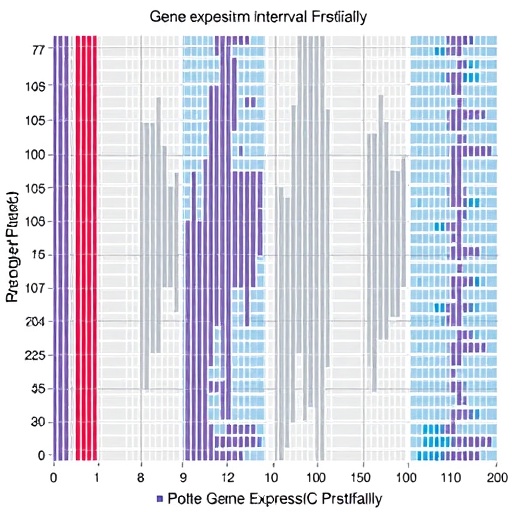In a groundbreaking development that could revolutionize forensic science, researchers have unveiled a novel approach poised to dramatically enhance the accuracy of postmortem interval estimations. The technique hinges on the intricate study of gene expression changes during the intra-puparial stage of Lucilia sericata, a common blowfly species frequently observed at crime scenes worldwide. This advancement promises not only to accelerate criminal investigations but also to provide forensic experts with a more precise biological clock when determining time since death.
Determining the minimum postmortem interval (mPMI) is a cornerstone in forensic investigations, aiding in establishing the timeline of death which often holds critical importance in solving crimes. Traditional methods have largely depended on entomological evidence, such as the developmental stages of insect larvae colonizing decomposing remains. However, these approaches are fraught with variability influenced by environmental factors, often resulting in estimations with wide margins of error. Enter molecular biology, where the expression of genes within insects undergoing metamorphosis emerges as a promising new metric for finer temporal resolution.
The research team focused on Lucilia sericata, a blowfly species renowned for its forensic significance. This species colonizes carcasses soon after death, with its life cycle stages—egg, larva, pupa, and adult—serving as approximate markers for time progression postmortem. Within this developmental continuum, the intra-puparial period stands out as an especially stable window, yet it has been underutilized in forensic studies primarily due to the challenges in monitoring subtle physiological changes during this stage. By delving into the dynamics of gene expression during this phase, the researchers aimed to overcome traditional limitations.
.adsslot_WZ1Dfu8Rgq{ width:728px !important; height:90px !important; }
@media (max-width:1199px) { .adsslot_WZ1Dfu8Rgq{ width:468px !important; height:60px !important; } }
@media (max-width:767px) { .adsslot_WZ1Dfu8Rgq{ width:320px !important; height:50px !important; } }
ADVERTISEMENT
Utilizing cutting-edge RNA sequencing techniques, the authors mapped the temporal patterns of gene activity inside the intra-puparial tissues of Lucilia sericata. This high-throughput approach enabled the identification of differentially expressed genes whose activity fluctuated predictably over time. Significantly, some gene expression profiles operated like molecular timers, providing quantifiable biomarkers that correlate tightly with elapsed intra-puparial duration. Such markers can serve as a molecular chronometer, enhancing the resolution of mPMI estimations.
Furthermore, the study’s longitudinal design, sampling at multiple time points across the intra-puparial stage, allowed for fine-grained characterization of expression trajectories. This comprehensive data set revealed that certain gene clusters consistently ramp up or down in expression in synchrony with developmental milestones. These consistency patterns hold immense potential for building mathematical models capable of converting molecular data into temporal estimates with unprecedented accuracy, a leap forward compared to traditional morphological assessments.
Importantly, the researchers also demonstrated that environmental variables, such as temperature fluctuations—known to confound insect development rates—had relatively minor effects on the gene expression signatures tracked. This robustness suggests molecular markers might offer a more reliable basis for timing analyses under diverse forensic contexts, mitigating one of the principal hurdles faced by entomological methods reliant on physical growth.
This study’s implications extend beyond academic curiosity into practical application within forensic casework. By integrating gene expression data into standard investigative toolkits, forensic entomologists could deliver mPMI estimates with tighter confidence intervals, thereby improving legal outcomes. Such precision is particularly pivotal in cases involving short postmortem intervals, where classical developmental benchmarks lack sufficient granularity to discern critical differences in timing.
The research also paves the way for creating molecular assays deployable in field conditions, potentially enabling the rapid screening of intra-puparial samples at crime scenes without the need for time-consuming laboratory culture or microscopic examination. Portable, gene-based diagnostic tools could transform forensic workflows, making them faster and more accessible even in resource-limited settings.
Moreover, these findings underscore a broader trend in forensic science: harnessing genomics to refine and expand traditional investigative methodologies. The empowerment offered by molecular data analysis reflects ongoing convergence between biology and legal medicine, marking a new era where genes, not solely phenotypes, dictate lines of forensic inquiry.
Despite its promise, translating this research into routine forensic practice will require further validation across diverse blowfly populations and environmental contexts. Standardization of protocols for sample collection, RNA preservation, and gene expression quantification must be established to ensure reproducibility and legal admissibility. Nevertheless, the current study offers a compelling blueprint and compelling preliminary data supporting this direction.
In addition to forensic applications, insights gained into intra-puparial gene dynamics enrich fundamental understanding of metamorphosis, a complex biological process still not fully elucidated at the molecular level. This dual contribution exemplifies how applied research can simultaneously drive scientific discovery while addressing pressing societal needs.
The convergence of entomology, molecular biology, and legal medicine showcased here exemplifies interdisciplinary innovation. By pushing beyond phenotype-based timelines into the realm of molecular chronobiology, researchers are retooling forensic frameworks with precision instruments hidden in the genome of a tiny, yet globally ubiquitous insect.
Ultimately, this study represents a significant stride toward closing gaps in crime scene reconstruction, optimizing how time since death is inferred. With enhanced molecular markers of insect development, forensic scientists will be equipped with sharper tools, accelerating justice and deepening humanity’s grasp of life’s biological clocks even after death.
As forensic science continues evolving, the molecular interrogation of carrion insects like Lucilia sericata heralds a transformative chapter. By focusing on the gene expression patterns inside the vulnerable pupal casing, scientists have uncovered a robust biological timescale, etched in the DNA’s activity, that ticks steadily irrespective of external variables.
Looking ahead, expanding such molecular methodologies across other forensically relevant insect species will further refine postmortem interval estimates globally. This broadened scope ensures that from tropical to temperate zones, forensic entomology can maintain reliability amid climate and ecosystem variability.
In sum, the study offers a sophisticated molecular lens through which the forensic community can glimpse the invisible passage of time encoded within the developmental genetics of blowflies. Its implications resonate beyond criminal investigations into the realms of molecular ecology, developmental biology, and the ever-evolving narrative of life, death, and time.
Subject of Research: Differential gene expression during the intra-puparial period of Lucilia sericata to improve minimum postmortem interval estimation.
Article Title: Differential gene expression during intra-puparial period of Lucilia sericata (Diptera: Calliphoridae) for improving minimum postmortem interval estimation.
Article References:
Pereira, A.J., Sonzogni, S.V., Centeno, N.D. et al. Differential gene expression during intra-puparial period of Lucilia sericata (Diptera: Calliphoridae) for improving minimum postmortem interval estimation. Int J Legal Med (2025). https://doi.org/10.1007/s00414-025-03537-8
Image Credits: AI Generated
Tags: accuracy of death time estimationbiological clock in death investigationsentomological evidence in crime scenesforensic science advancementsgene expression analysisimpact of environmental factors on PMI calculationsinsect metamorphosis in forensicsLucilia sericata studyminimum postmortem interval determinationmolecular biology in forensicspostmortem interval estimationtraditional vs modern forensic methods





